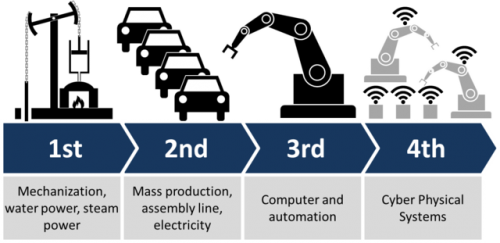A conversation about the Fourth Industrial Revolution
According to a new study, within the next five years, about 68% of companies will apply technologies such as Artificial Intelligence (AI), Machine Learning, Virtual reality (VR) and Robotics to reduce costs and increase profits. Many top executives know that they must invest in these technologies or risk being eliminated by their competitors. But the problem is how to change quickly when many of them are not familiar with these new technologies?
Last year, when attending a conference in Asia, an executive asked me: “What we need is to understand these technologies and how they help us achieve the benefit.” Another asked: “Is Artificial Intelligence (AI) real or fiction? We all heard about the fourth industrial revolution, but it is difficult to distinguish the “Hype” and the “Fact.” We need a simple answer.”
I explained: “There are many different explanations. Academic people have a different view than technical consultants, and government officials see it differently from business owners. The Fourth Industrial Revolution can be explained as the convergence of multiple technologies that will change many things. Just imagine all the technologies that are being used separately, are now connected to each other with enormous processing power and significant speed to change everything. This revolution has three key factors: Velocity (Exponential acceleration), Scope (All industries will be impacted) and Depth (All countries, at all levels) and that is why it is distinct from the previous three. The first industrial revolution is about the creation of steam engines and mechanical equipment to improve the factory productivity. It impacts mostly manufacturing companies. The second Industrial revolution is about the invention of electricity and the mass production using assembly lines. It impacts mostly industrial countries. The third industrial revolution is about electronics and the creation of the computer industry. It impacts many countries but not all. However, the fourth Industrial revolution is the combination of several technologies to impact everything, every country, every level, and it happens globally at unprecedented velocity. It is happening now in some places, it may not happen across the world yet, as some countries are being impacted more severely than others. However, soon all countries and everything will be drawn into this whirlwind.”
An executive asked: “I know about robots and automation but are they belong to the third or the fourth industrial revolution? I need an example for the velocity, scope, and depth.”
I explained: “Let us look at a simple case: Uber, the startup that impacts the entire transportation industry. This company is destroying the traditional taxi industry. Soon it will change the trucking industry and impact all transportation companies (Scope). This company does not own a single car, but it has millions of cars available for transportation. (Depth). Uber is an example of the convergence of several technologies and businesses to disrupt the transportation industry, and it is spreading all over the world (Velocity and Depth). The company only started about five years ago, but its impact can be felt in many countries already. If you look at the first Industrial Revolution, it took over one hundred years for steam engines to be adopted from one place to another. The second Industrial Revolution took over fifty years as electricity replaced steam engines. But it took thirty years for the electronic and computer industry to take place in many countries. The Internet is only twenty-five years old, and the iPhone is only ten years, old, but over billions of people are using them. Now look at Uber, it only takes five years to impact the entire industry so you can experience how fast is this change. Uber cars are only the beginning of the disruption; soon the company will use “Self-driving” cars for transportation. Can you imagine how much impact it will have?”
An executive said: “But Uber only impacts the transportation. My company is in Finance, how could Uber impact my business?”
I explained: “As self-driving technology is being created, how many car companies will build “self-driving cars?” If they do, they will need money to invest in the new factory and business. They have to borrow money from the bank, and it will impact the banking industry. Do the banks want to lend money to these car companies or not? What will happen if these companies fail? There are risks in new business so some banks may do business with car companies but others may not, but it will influence the way banking industry does business. Insurance companies will have to decide on how do they insure cars with no driver? What will happen when an accident occurs? Who should be at fault? The car owner or the car company? Or the software on the self-driving car? That also impacts the insurance industry. How does government issues regulations on self-driving cars? What laws should they pass? That also affects the government. How do people react to this technology? What will happen to taxi drivers when they have no job? What will happen to the car companies who do not build self-driving cars? What will happen to the trucking industry? What will happen when a lot of people suddenly become unemployed because of this technology?
An executive asked: “But what happen if we do not use these technologies?” I told him: “The Fourth Industrial Revolution will change everything whether you like it or not. You can say it has not happened in your country now but it will soon. The best way is to learn about it, understand it, and implement the needed technologies to stay competitive. In order to do that, you need to hire more technical people, especially new graduates because they have the latest skills who can help you to identify the right technology to implement. Today technology is a crucial strategy for all businesses. You need to have highly skilled technical people to support you to deal with this fourth industrial revolution issues.”
Sources
- Blogs of Prof. John Vu, Carnegie Mellon University
